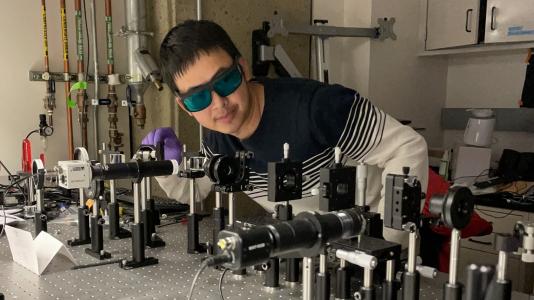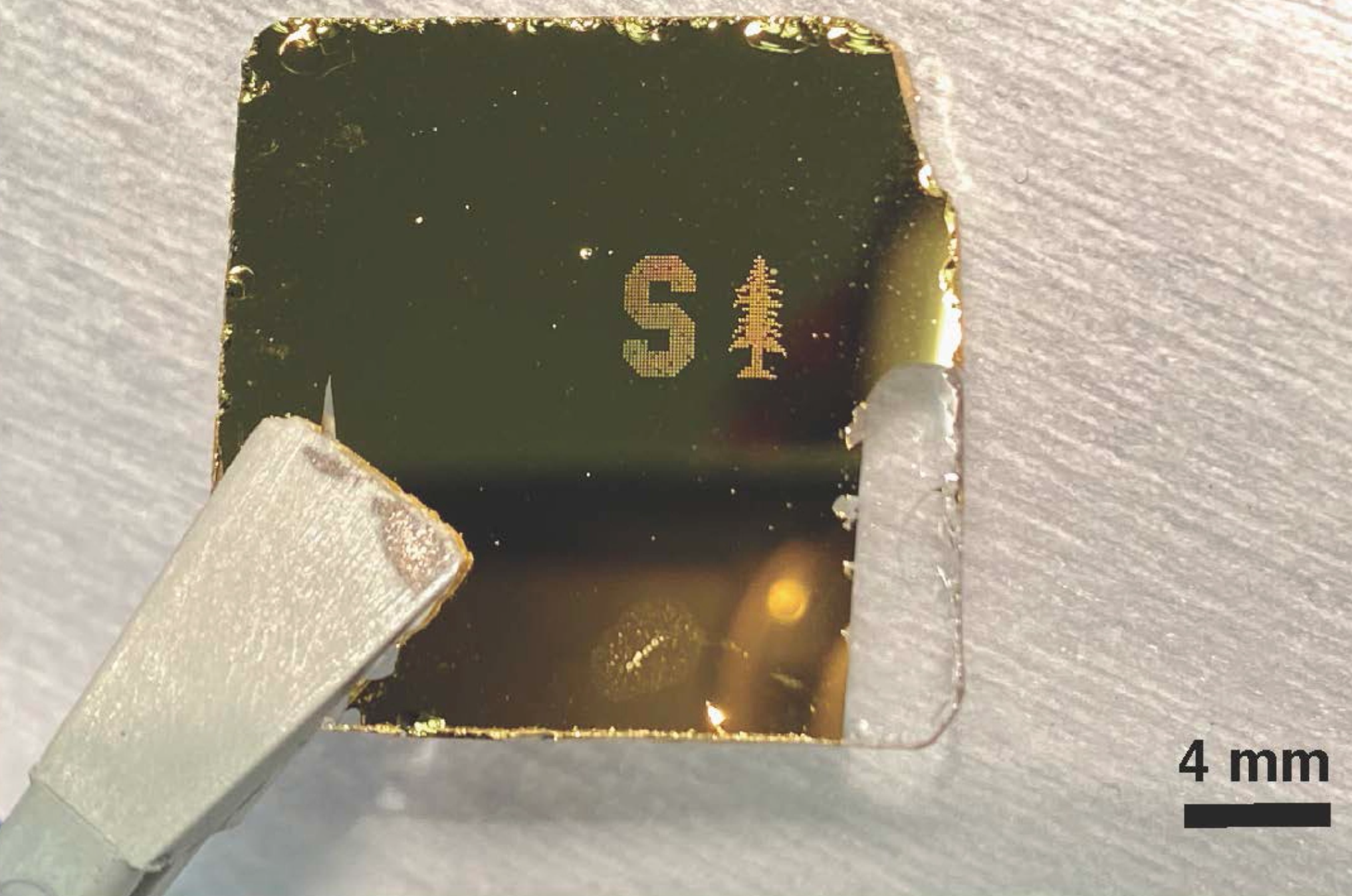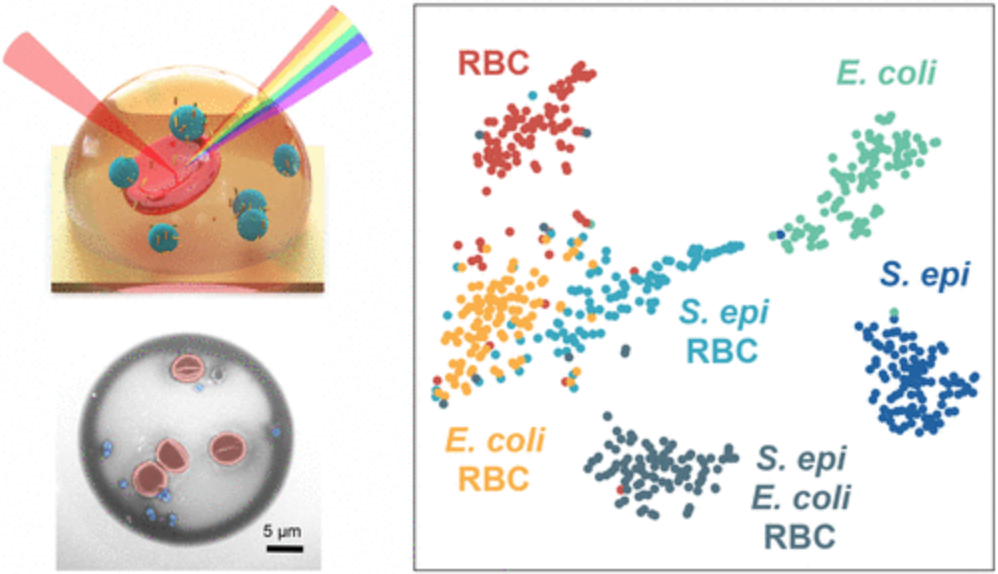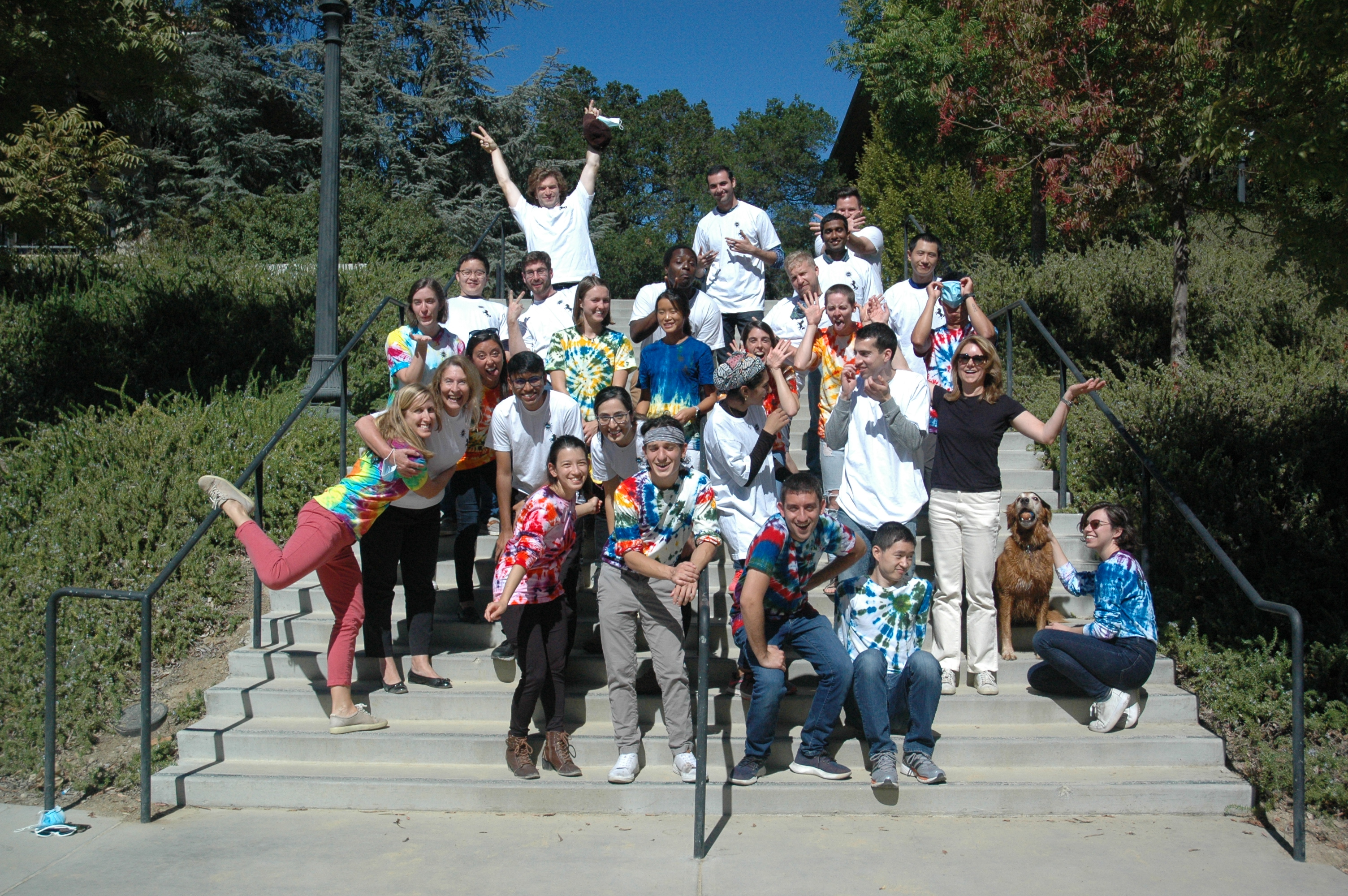Latest News
Mar 23: Check out a recent interview with Jen Dionne on bioprinting for rapid bacterial identification:
Mar 20: WebMD Health News reports on work by Fareeha Safir and co-authors, combining inkjet printer technology with new cutting edge optical imaging to identify bacteria and other infections in the blood. Read the article here!
Mar 20: Argonne National Laboratory reports on work done in collaboration with Q-NEXT quantum research center by D-Lab member Feng Peng, investigating metamaterials for quantum information storage and control. Read the article here!

Mar 2: Stanford News reports on work by Fareeha Safir and co-authors, developing a bio-printing platform for rapid bacterial identification. Read the article here!

Feb 27: Congratulations to the latest D-Lab graduate, Dr. Fareeha Safir!
Featured Research
I. Combining Acoustic Bioprinting with AI-Assisted Raman Spectroscopy for High-Throughput Identification of Bacteria in Blood:
Identifying pathogens in complex samples such as blood, urine, and wastewater is critical to detect infection and inform optimal treatment. Here, F. Safir et al develop an acoustic bioprinter to digitize samples into millions of droplets, each containing just a few cells, which are identified with Surface-enhanced Raman spectroscopy (SERS) and machine learning (ML). Our combined bioprinting and SERS platform could accelerate rapid, sensitive pathogen detection in clinical, environmental, and industrial settings.
II. Accelerating quantum materials development with advances in transmission electron microscopy:
In this review, after introduction of different classes of quantum materials and quantum excitations, P. Moradifar et al describe how progress in the field of electron microscopy, including in situ and in operando EM, can accelerate advances in quantum materials. Our review describes EM methods including: i) principles and operation modes of EM, ii) EM spectroscopies, such as electron energy loss spectroscopy, cathodoluminescence, and electron energy gain spectroscopy, iii) 4D scanning transmission electron microscopy, iv) dynamic and ultrafast EM, v) complimentary ultrafast spectroscopies, and vi) atomic electron tomography. Check out this work on the arXiv!III. Achiral dielectric metasurfaces for spectral and polarization control of valley specific light emission from monolayer MoS2:
Two-dimensional transition metal dichalcogenides host robust excitons with a valley degree of freedom that can be optically accessed and manipulated for quantum information processing. Here, Y. Liu et al demonstrate enhancement and spectral control of valley exciton emission in MoS2 via coupling with dielectric metasurfaces composed of arrays of Si nano-disks. This study provides a Si-compatible photonic design to improve the recombination dynamics of valley polarized excitons and trions for a variety of on-chip valleytronic applications. Check out this work on the arXiv!IV. Rapid genetic screening with high quality factor metasurfaces:
Genetic analysis methods are foundational to advancing personalized and preventative medicine, accelerating disease diagnostics, and monitoring the health of organisms and ecosystems. Here, J. Hu et al introduces a label-free genetic screening platform based on high quality (high-Q) factor silicon nanoantennas functionalized with monolayers of nucleic acid fragments. This work provides a foundation for rapid, compact, amplification-free and high throughput multiplexed genetic screening assays spanning medical diagnostics to environmental monitoring. Check out this work on the arXiv!
